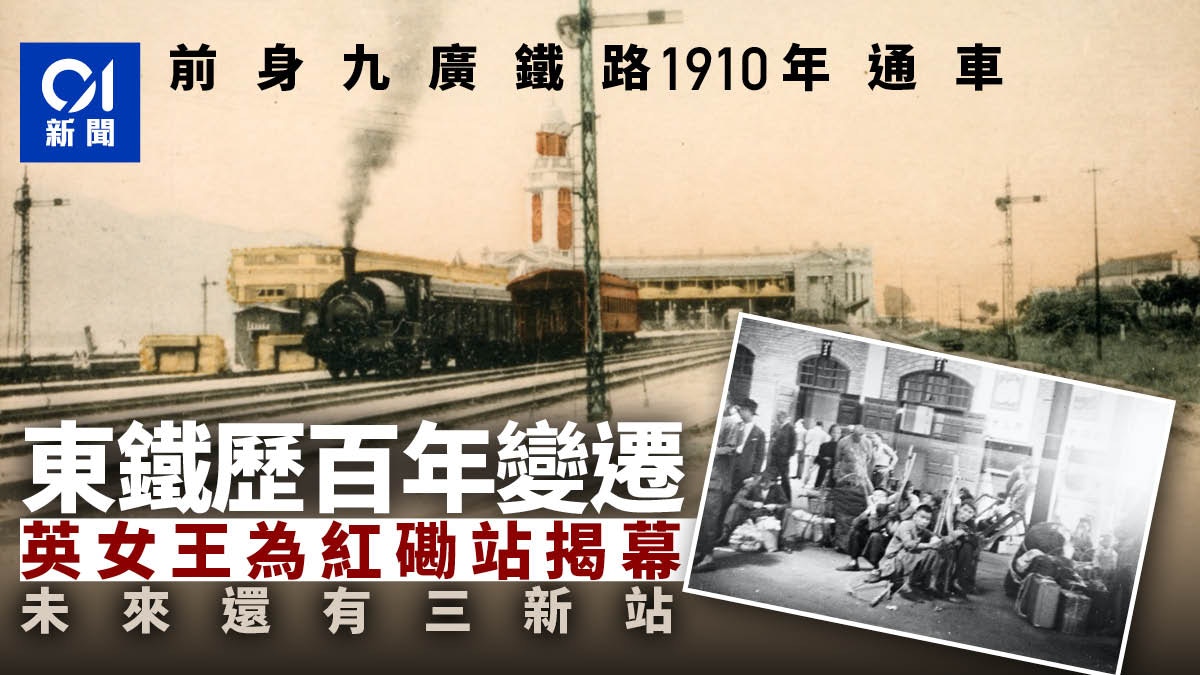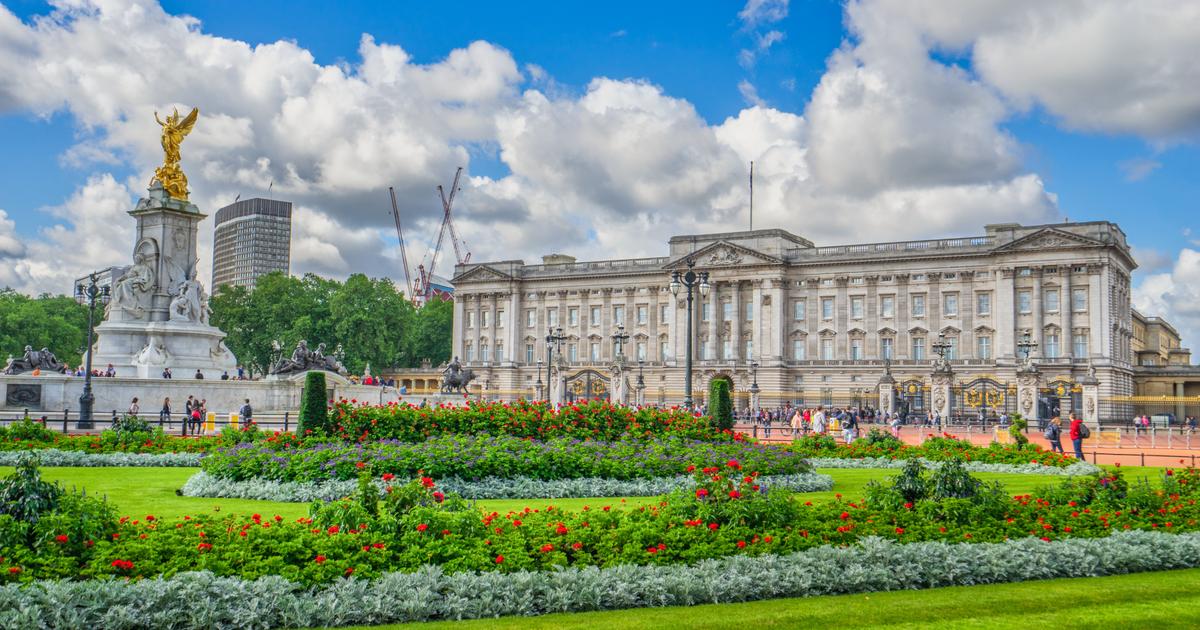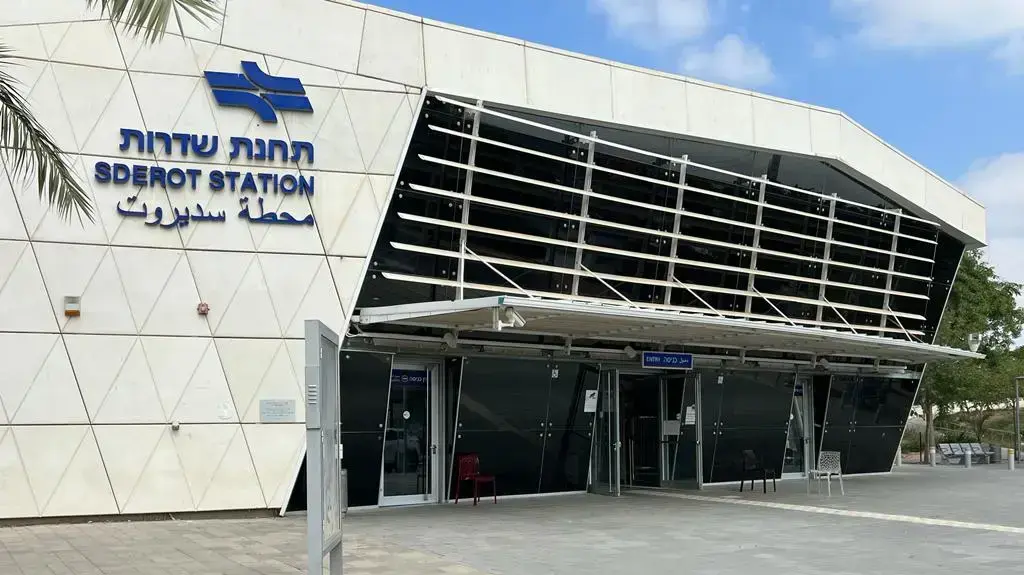The East Rail has gone through a hundred years. It has experienced the relocation of the terminus, the addition and removal of stations along the route, the suspension of branch lines, and even the route it travels has changed in response to the development of the times, confirming the changes of the times in Hong Kong.
The predecessor of the East Rail Line, the Kowloon-Canton Railway (British Section), was opened to traffic in 1910. At that time, starting from the Tsim Sha Tsui terminus, the entire line had only 8 stations.
With the opening of the East Rail Cross-sea Section, the East Rail will add two more stations, bringing the total to 16. The terminus will be extended from Hung Hom to Admiralty Station on Hong Kong Island.
However, the development of the East Rail has not stopped. According to the future railway development plan announced by the Hong Kong government, at least 3 stations are still to be developed, including the Kwu Tung Station, which has been finalized to connect the Northern Link and the East Rail. Year completed.
In the last "Policy Address" of Chief Executive Carrie Lam Cheng Yuet-ngor, in addition to proposing to study the addition of Pak Shek Kok Station, the East Rail will be extended to Luo Wu in Shenzhen in the future, and a new station initially named Luo Wu will be added between the existing Luo Wu Station and Sheung Shui Station. The new station of the South Railway Station serves commercial and residential purposes in Luohu and Man Kam To.
When the Kowloon-Canton Railway (British Section) was first opened to traffic in 1910, it started from Tsim Sha Tsui, passed through Yau Ma Tei Station, Sha Tin Station, Tai Po Kau Station, Tai Po Market Station, and Fanling Station on the way, and went straight to Lo Wu.
When it opened to traffic, the Kowloon terminus in Tsim Sha Tsui had not yet been completed. Passengers got on and off at the nearby temporary terminus. It was not until 1911 that the Kowloon terminus at the Clock Tower in Tsim Sha Tsui was completed.
The trucks used on the Sha Tau Kok branch line have no covers, and the entire journey needs to be exposed to the sun and rain.
(Photo from KCRC website)
East Rail used to have a branch line connected to Sha Tau Kok Kongling Station as a Grade 3 historic building
According to the Railway Museum, the British Hong Kong Government agreed in April 1911 to build a narrow-gauge railway, the Sha Tau Kok Spur Line, from Fanling to Sha Tau Kok, and opened to traffic in April 1912.
The branch line is 7.25 miles long, with 3 stations in the middle, and the journey time is 55 minutes.
However, the train cards used on the Sha Tau Kok branch line are not covered, and passengers need to be exposed to the sun and rain.
After the branch line was used for 16 years, the Sha Tau Kok Highway was completed in 1928, and it was officially suspended. As for the Kongling Station, which belongs to the Sha Tau Kok branch line, the building has been preserved to this day, and it has been rated as a Grade 3 historical building.
In line with the development of the New Territories, the East Rail has successively added a number of new stations over the years. The earliest addition was Sheung Shui Station, which opened in 1930. Later, Chung Chi College was established in Ma Liu Shui in 1951, and the Hong Kong government added it in 1956. Ma Liu Shui Station was set up, until the establishment of the Chinese University of Hong Kong in 1963, the station was renamed University Station; with the opening of the Sha Tin Racecourse in 1978, the East Rail also added a Racecourse Station in the same year.
Entering the era of electrification, Kowloon Tong, Fotan and Taihe Stations have been put into service successively
With the development of new towns in the 1970s and 1980s, trains also entered the era of electrification. East Rail added Kowloon Tong Station in 1982, followed by Fo Tan Station and Tai Wo Station in 1985 and 1989.
The old Tai Po Market Station is now the Railway Museum, and the former is Tai Po Kau Station.
It is worth mentioning that the location of the current Tai Po Market Station is different from that of the Tai Po Market Station originally established by the Kowloon-Canton Railway. In the same year, the old Tai Po Market Station was rebuilt into the Hong Kong Railway Museum, while the Tai Po Kau Station is now rebuilt into the KCRC staff quarters Che Shing House.
Since 2020, Ce Chengxuan has lent out transitional housing for operation.
Tai Po Kau Station and the Old Tai Po Market Station were built in 1983. The current Tai Po Market Station has been closed since its completion, but the two stations are still "traces can be found".
Among them, the Old Tai Po Market Station is now a railway museum, showing the development of the railway in Hong Kong.
Tai Po Kau Station was demolished and rebuilt as KCRC staff quarters, Che Shing House. Some units were handed over to the Housing Society and converted into transitional housing.
The Kowloon Terminus in Tsim Sha Tsui, and now only the Clock Tower in Tsim Sha Tsui, was built in 1911 and served until 1975.
The Kowloon Railway carried out a series of modernization projects in the 1960s, including the relocation of the East Rail Terminus from Tsim Sha Tsui to Hung Hom. The Kowloon Station in Hung Hom was completed in 1975. The inauguration of the station was carried out by Queen Elizabeth II, who visited Hong Kong for the first time at that time. present.
Kowloon Station was refurbished in 1995 and renamed Hung Hom Station, which is still in use today.
With the opening of East Tsim Sha Tsui Station in 2004, the East Rail Line once extended the terminus to East Tsim Sha Tsui Station. In 2009, the Kowloon Southern Line opened to traffic, and the East Rail Line returned to Hung Hom.
However, after the cross-sea section of the East Rail Line is opened to traffic, the East Rail terminus will be changed from Hung Hom Station to Admiralty Station, and the existing East Rail platform at Hung Hom Station will also be closed, and the new East Rail platform located in the newly expanded part of the station will be used instead. platform.
Luohu Station will be moved to the north in Shenzhen, Kwudong Station, Baishijiao Station, and Luohu South Station are to be developed
The development of the East Rail Line has not stopped either. At present, the East Rail Line has 14 stations. With the opening of the sea section, the total number of stations has increased to 16.
In the future, there are still three new East Rail stations to be developed. The Government announced in last year's Policy Address that Pak Shek Kok Station will be added between University Station and Tai Po Market Station, and the existing Lo Wu Station will also be extended to Shenzhen. Between Lo Wu and Sheung Shui Stations, Luo Nan Station will be added; and Kwu Tung Station, which is a branch line of Lok Ma Chau, will connect to the future Northern Link Line, which has been finalized and will be completed in 2027.
▼On May 6th, the 12-cale retirement of East Rail "Wuyantou" ▼
+16
East Rail | The 12-car "Blackhead" train is retired today, and a large number of railway fans are rushing to take the last train: What a pity for East Rail.
Photo Series|The 12-car 12-car British train is retiring today, and the 9-car Korean system is re-reviewing the service. Reserve space on the platform level to expand the new line















